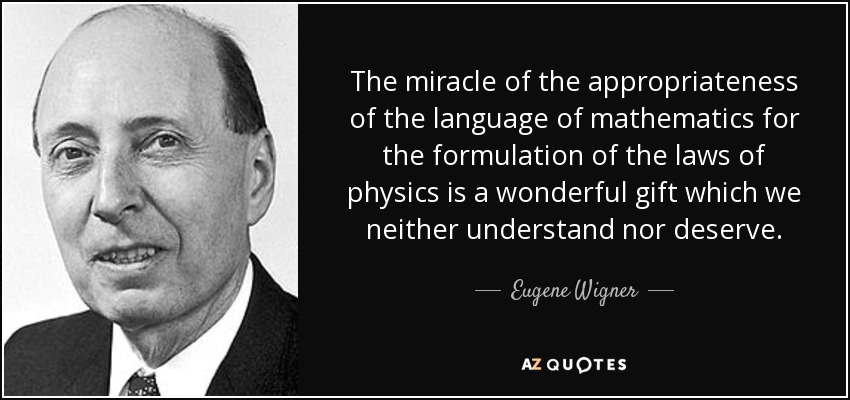Mathematical reason itself does not err ~ Kurt Gödel
Continuing from my last two posts, I finally derived, via Kähler-twisting relations
![Rendered by QuickLaTeX.com \[\left\{ {\begin{array}{*{20}{c}}{{\Psi _m} = {\lambda ^\alpha }{\sigma _{\mu \alpha \dot 1}}e_m^\mu }\\{{\kappa _{\overline m \overline n }} = {{\overline \lambda }_{\dot \alpha }}\overline \sigma _{\mu \nu \dot 2}^{\dot \alpha }e_{\overline m }^\mu \,e_{\overline n }^\nu }\\{\kappa = \delta _{\dot 2}^{\dot \alpha }{{\overline \lambda }_{\dot \alpha }}}\end{array}} \right.\]](https://www.georgeshiber.com/wp-content/ql-cache/quicklatex.com-210d1ee198c8e48d020ae107049d9485_l3.png)
that on a hyper-Kähler manifold, by ‘constant spinor’ change-of-variables, we can identify
![Rendered by QuickLaTeX.com \[\begin{array}{c}{S^{g \cdot f}} = \int\limits_{{M_4}} {{d^4}} x\sqrt g {\rm{Tr}}\left( {{F_{\overline m \overline n }}} \right.{F^{\overline m \overline n }} + \\\frac{1}{2}{\left| {{J_{m\overline n }}{F^{m\overline n }}} \right|^2} - 2{\varepsilon ^{\overline m \overline n pq}}{\kappa _{\overline m \overline n }}{{\not D}_p}{\Psi _q}\\ + \,i\kappa {J^{\overline m l}}{{\not D}_{\overline m }}\left. {{\Psi ^l}} \right)\end{array}\]](https://www.georgeshiber.com/wp-content/ql-cache/quicklatex.com-ae328a1f5e1d77177eca64c26f6d3dda_l3.png)
with the N = 1, D = 4 Yang–Mills action
![Rendered by QuickLaTeX.com \[\begin{array}{c}{S_{SYM}} = \int\limits_{{M_4}} {{d^4}} x\sqrt g \frac{1}{4}{\rm{Tr}}\left( {{F_{\mu \nu }}} \right.{F^{\mu \nu }}\\ + {F_{\mu \nu }}{\overline F ^{\mu \nu }} + \overline \lambda {\gamma ^\mu }{{\not D}_\mu }\left. \lambda \right)\end{array}\]](https://www.georgeshiber.com/wp-content/ql-cache/quicklatex.com-75a528887e8473c59ab81948870b200e_l3.png)
getting the following deep relation between N = 2 SYM theory, topological quantum field theory, and Kähler-theory
that since N = 2 SYM theory is a TQFT, and its Poincare supersymmetric version is obtained by coupling the N = 1 Yang–Mills multiplet to a chiral multiplet in the adjoint representation of the gauge group, we get an expression of the N = 1 scalar theory as a TQFT on a Kähler manifold.
In this post, I will derive a connection between the Batalin-Vilkoviski action, which I will eventually show is crucial to M-theory‘s braneworld cosmology, indeed, to any quantum-cosmological model consistent with a quantum gravity theory.
For any Calabi–Yau three–fold ![]() one can always use the holomorphic closed
one can always use the holomorphic closed ![]() –form
–form ![]() and define
and define ![]() thus getting the transformed classical-BRST action
thus getting the transformed classical-BRST action
![Rendered by QuickLaTeX.com \[{I_{cl}}\left( {A,{B_{0,1}}} \right) = \int\limits_{{M_6}} {{\Omega _{3,0}}} \wedge {\rm{Tr}}\left( {{B_{0,1}} \wedge F} \right)\]](https://www.georgeshiber.com/wp-content/ql-cache/quicklatex.com-da00098efc4186f06cdad702fc9f6695_l3.png)
with the corresponding BRST symmetry
![Rendered by QuickLaTeX.com \[\left\{ {\begin{array}{*{20}{c}}{Q{A_m} = {\Psi _m} + {{\not D}_m}c}\\{Q{A_{\overline m }} = {{\not D}_{\overline m }}\,c}\\{Q{B_{\overline m }} = {{\not D}_{\overline m }}\,\chi - \left[ {c,{B_{\overline m }}} \right]}\\{Q\chi = - \left[ {c,\chi } \right]}\\{Qc = - \frac{1}{2}\left[ {c,c} \right]}\end{array}} \right.\]](https://www.georgeshiber.com/wp-content/ql-cache/quicklatex.com-7ea2107d38b9fc341ab2ad59a138d573_l3.png)
whose invariance under the transformation of the ![]() field is guaranteed by part of the Bianchi identity
field is guaranteed by part of the Bianchi identity
![]()
and closed-ness of ![]() and the fact that the BRST action
and the fact that the BRST action
![Rendered by QuickLaTeX.com \[{I_{cl}}\left( {A,{B_{0,1}}} \right) = \int\limits_{{M_6}} {{\Omega _{3,0}}} \wedge {\rm{Tr}}\left( {{B_{0,1}} \wedge F} \right)\]](https://www.georgeshiber.com/wp-content/ql-cache/quicklatex.com-da00098efc4186f06cdad702fc9f6695_l3.png)
is invariant under the complexified gauge group ![]() .
.
The BRST symmetry of
![Rendered by QuickLaTeX.com \[\left\{ {\begin{array}{*{20}{c}}{Q{A_m} = {\Psi _m} + {{\not D}_m}c}\\{Q{A_{\overline m }} = {{\not D}_{\overline m }}\,c}\\{Q{B_{\overline m }} = {{\not D}_{\overline m }}\,\chi - \left[ {c,{B_{\overline m }}} \right]}\\{Q\chi = - \left[ {c,\chi } \right]}\\{Qc = - \frac{1}{2}\left[ {c,c} \right]}\end{array}} \right.\]](https://www.georgeshiber.com/wp-content/ql-cache/quicklatex.com-7ea2107d38b9fc341ab2ad59a138d573_l3.png)
is derivable from the Batalin–Vilkoviski action
![Rendered by QuickLaTeX.com \[\begin{array}{c}{S_{BV}} = \int\limits_{{M_6}} {\sqrt g } {d^6}x{\rm{Tr}}\left( {{\varepsilon ^{\overline m \overline p \overline q }}} \right.{B_{\overline m }}{F_{\overline p \overline q }}\\{ + ^ * }{B^{\overline m }}\left( {{{\not D}_{\overline m }}\chi - \left[ {c,{B_{\overline m }}} \right]} \right) + \\^ * {A^m}\left( {{\Psi _m} + {{\not D}_{\overline m }}c} \right){ + ^ * }\,{A^{\overline m }}{{\not D}_{\overline m }}c \cdot \\^ * {\Psi ^m}\left[ {c,{\Psi _m}} \right] + \left( { - \frac{1}{2}} \right.\left. {\left. {\left[ {c,c} \right]} \right)} \right)\end{array}\]](https://www.georgeshiber.com/wp-content/ql-cache/quicklatex.com-4bf5f1cdbb25ee1042a099d0fb2d6eec_l3.png)
Now we must quantize the model, and the best way is to
quantize the theory around a non-perturbative vacuum corresponding to a stable holomorphic vector bundle, since in that context, the BF model correspond to the twisted version of a supersymmetric Yang–Mills theory
since it allows the BRST symmetry to be treated as ordinary gauge ones and fixed with transversality conditions on the ![]() and
and ![]()
![]()
The corresponding BV fermion identity follows then
![]()
So the shift symmetry on the ![]() part of the connection gives rise to three degrees of freedom, while the symmetry on the
part of the connection gives rise to three degrees of freedom, while the symmetry on the ![]() field to one and are collected into the ghost fields
field to one and are collected into the ghost fields ![]() respectively. In the non–perturbative case, the gauge fixing conditions are
respectively. In the non–perturbative case, the gauge fixing conditions are
![]()
Notice that ![]() reduces the complex gauge group
reduces the complex gauge group ![]() to the unitary group
to the unitary group ![]() and can be interpreted as a partial gauge-fixing for the complex gauge symmetry of
and can be interpreted as a partial gauge-fixing for the complex gauge symmetry of
![Rendered by QuickLaTeX.com \[{I_{cl}}\left( {A,{B_{0,1}}} \right) = \int\limits_{{M_6}} {{\Omega _{3,0}}} \wedge {\rm{Tr}}\left( {{B_{0,1}} \wedge F} \right)\]](https://www.georgeshiber.com/wp-content/ql-cache/quicklatex.com-da00098efc4186f06cdad702fc9f6695_l3.png)
The BV fermion corresponding to
![]()
where ![]() are the antighosts associated to BV gauge–fixing conditions and whose BV action is given
are the antighosts associated to BV gauge–fixing conditions and whose BV action is given
![Rendered by QuickLaTeX.com \[\begin{array}{c}{S_{{\rm{aux}}}} = \int\limits_{{M_6}} {\sqrt g } {d^6}x{\rm{Tr}}{\left( {^ * \overline \chi } \right._{\overline m \overline n }}{h^{\overline m \overline n }} + \\^ * \overline \eta h + \left. {^ * \overline {c\,} b} \right)\end{array}\]](https://www.georgeshiber.com/wp-content/ql-cache/quicklatex.com-442c513be69331dcc4fc957fc8733390_l3.png)
Now, by eliminating the anti–fields by means of
![]()
and implementing the gauge–fixing conditions
![]()
and by integration on the Lagrangian multipliers, we get from
![Rendered by QuickLaTeX.com \[\begin{array}{c}{S_{BV}} = \int\limits_{{M_6}} {\sqrt g } {d^6}x{\rm{Tr}}\left( {{\varepsilon ^{\overline m \overline p \overline q }}} \right.{B_{\overline m }}{F_{\overline p \overline q }}\\{ + ^ * }{B^{\overline m }}\left( {{{\not D}_{\overline m }}\chi - \left[ {c,{B_{\overline m }}} \right]} \right) + \\^ * {A^m}\left( {{\Psi _m} + {{\not D}_{\overline m }}c} \right){ + ^ * }\,{A^{\overline m }}{{\not D}_{\overline m }}c \cdot \\^ * {\Psi ^m}\left[ {c,{\Psi _m}} \right] + \left( { - \frac{1}{2}} \right.\left. {\left. {\left[ {c,c} \right]} \right)} \right)\end{array}\]](https://www.georgeshiber.com/wp-content/ql-cache/quicklatex.com-4bf5f1cdbb25ee1042a099d0fb2d6eec_l3.png)
and
![Rendered by QuickLaTeX.com \[\begin{array}{c}{S_{{\rm{aux}}}} = \int\limits_{{M_6}} {\sqrt g } {d^6}x{\rm{Tr}}{\left( {^ * \overline \chi } \right._{\overline m \overline n }}{h^{\overline m \overline n }} + \\^ * \overline \eta h + \left. {^ * \overline {c\,} b} \right)\end{array}\]](https://www.georgeshiber.com/wp-content/ql-cache/quicklatex.com-442c513be69331dcc4fc957fc8733390_l3.png)
the (g.f.)-action
![Rendered by QuickLaTeX.com \[\begin{array}{c}{S^{g.f.}} = \int\limits_{{M_6}} {{d^6}} x\sqrt g {\rm{Tr}}\left( { - \frac{3}{2}} \right.{F^{\overline m \overline n }} + \\\left| {{J^{m\overline n }}{F_{m\overline n }}} \right|\left. {^2} \right) + {\overline \chi ^{\overline m \overline n }}{{\not D}_{\left[ {\overline m \,{\Psi _{\overline n }}} \right]}} + \\2i\overline \eta {J^{\overline m n}}{J^{m\overline n }}{{\not D}_{\overline m }}{\Psi _n} + \frac{4}{3}{\varepsilon _{\overline m \overline n \overline p }} \cdot \\{\overline \chi ^{\overline m \overline n }}{{\not D}^{\overline p }}\left. {\overline \chi } \right)\end{array}\]](https://www.georgeshiber.com/wp-content/ql-cache/quicklatex.com-9bedbefcf655726ccf9184572cadf021_l3.png)
and by the identity
![Rendered by QuickLaTeX.com \[\begin{array}{c} - \frac{1}{4}{\rm{Tr}}\left( {F \wedge * F} \right) + J \wedge {\rm{Tr}}\left( {F \wedge F} \right)\\ \cdot {\rm{Tr}}\left( { - \frac{3}{2}{F^{\overline m \overline n }}} \right.{F_{^{\overline m \overline n }}} + \left| {{J^{^{\overline m \overline n }}}{F_{^{\overline m \overline n }}}} \right|\left. {^2} \right)\end{array}\]](https://www.georgeshiber.com/wp-content/ql-cache/quicklatex.com-85151d1fdb95c5c0d444103e99effb20_l3.png)
we can recognize in the first line of the (g.f.)-action the bosonic part of the N=1 D=6 SYM action, modulo the topological density ![]() , where
, where ![]() is the Kähler two–form. Concerning the fermionic part, one can use of the mapping between chiral fermions and complex forms
is the Kähler two–form. Concerning the fermionic part, one can use of the mapping between chiral fermions and complex forms
![]()
to map the topological ghosts ![]() into the right–handed spinor
into the right–handed spinor ![]() and the topological antighosts into the left–handed spinor
and the topological antighosts into the left–handed spinor ![]() . Hence, one can use the covariantly constant spinor
. Hence, one can use the covariantly constant spinor ![]() of the Calabi–Yau three-fold to perform the mapping
of the Calabi–Yau three-fold to perform the mapping
![Rendered by QuickLaTeX.com \[\left\{ {\begin{array}{*{20}{c}}{{\Psi _m} \to \overline \lambda {\Gamma _m}\zeta }\\{\chi \to \overline \chi \zeta }\\{{{\overline \chi }^{\overline m \overline n }} \to \zeta \,{\Gamma ^{\overline m \overline n }}\lambda }\\{\overline \eta \to {\varepsilon _{\overline m \overline n \overline p }}\zeta }\end{array}} \right.\]](https://www.georgeshiber.com/wp-content/ql-cache/quicklatex.com-4090b6633816fdba36791ac8e4f49397_l3.png)


